| By George R. Lucas |
A Moral and Legal Challenge in the Cyber Domain |

Against such criticisms, I have argued by contrast that there is a distinctive category of cyber conflict that qualifies as warfare – or, more correctly, which rises to the level of the “use, or threat of use, of force by states; or, the equivalent of an armed attack” in international law (Lucas 2017). This new kind of warfare has thus far manifest itself in two distinctive forms:
- effects-based weapons (such as Stuxnet) which can be deployed to damage or destroy military targets; and
- weapons and attacks in the cyber domain intended to produce political effects similar to those usually sought as the goal or objective of a conventional use of force by states against one another.

SSH is not identical to, nor can it be merely reduced to acts of vandalism, crime, or espionage, although it utilizes such components within the framework of an SSH attack. One might say that SSH is either none of the above, or else it involves all of the above “on steroids.” Considerations of scale and magnitude, as well as of ease of access, are important in understanding this category of warfare, much as such considerations have been, in the past, for differentiating between “private” and domestic uses of conventional lethal force (e.g., as criminal acts by individuals or organizations), and those of “public” warfare that are state-sponsored.
The Rise of State-Sponsored Hacktivism
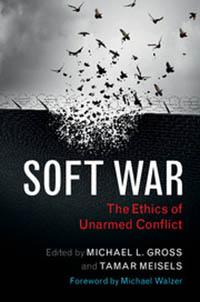
It is extremely important, as Jessica Wolfendale demonstrates, to recognize this and other tactics of “soft war” as authentic warfare, so that one may determine just exactly how to understand and respond to such events (Wolfendale 2017). In this instance, one might think it possible to subsume SSH in particular, and other elements of soft war, under the relatively new category of conventional uses of force that fall short of full-scale war, termed jus ad vim (Frowe 2015). But Valerie Morkevičius has shown decisively that soft-war tactics like SSH cannot be so understood or subsumed, because they involve no use whatsoever of conventional force (Morkevičius 2017). In particular, unlike effects-based cyber weapons and attacks, SSH attacks do not cause physical harm. Instead, they disrupt normal social functions, cast doubt and sow fear among the general population, and spread confusion, undermine morale, and otherwise interfere with the normal conduct of government and military personnel and operations.
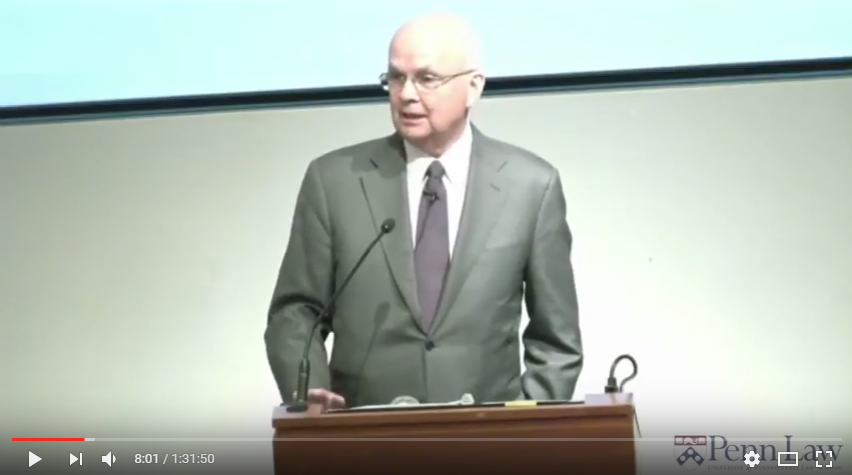
Cyber Warfare and Cultural Bias
Some of this difficulty stems from an underlying organizational and cultural bias that blinds us to the significance of SSH. Consider that Israel, the U.S., and its allies in the “Five Eyes” signal intelligence alliance are, collectively, supreme masters of the first kind of cyber warfare. Effects-based weapons like Stuxnet, tactical operations like “Olympic Games,” and the recent repeated “mysterious failures” of North Korean intercontinental missile test launches, are all complex, sophisticated, and resource-intensive operations. Very few nations possess the combination of technical expertise and national resources (and perhaps patience) to develop and deploy such weapons. Feeble attempts in this realm by less well-resourced states (an alleged Iranian attack on a small dam in upstate New York in 2013, for example: http://time.com/4270728/iran-cyber-attack-dam-fbi/) did not prove effective.
Large-scale, effects-based weapons are, in short, “our” kind of weapon: big, bold, expensive, intricate and technologically sophisticated, and fully equivalent to conventional war and weapons. By contrast, the weapons and tactics of SSH are comparatively small-scale. These rely more on cleverness, stealth, and deception bordering on perfidy. They are affordable, accessible, and attainable, and (in comparison to effects-based weapons) easily within reach of adversaries who lack the essential resources, or do not choose to invest those resources, let alone the time and energy necessary to develop high-quality effects-based cyber weapons.
And indeed: why should they bother? SSH attacks have demonstrated that they can accomplish nearly as much “political bang,” for only a fraction of the investment “buck.” Perhaps most significantly, these SSH operations take place just below the threshold of full attribution and retaliation. General Hayden described the months of confusion and uncertainty within the Obama administration over how and when to acknowledge and respond, as the Russian assaults on the presidential election of 2016 were detected and ongoing in the weeks and months leading up to the November 2016 election itself. Officials wondered, “What exactly are they up to, and what should we do about it?” While we ponder these questions in confusion, our adversaries are literally “eating our lunch!”

The Failure of International Law
Unlike the advent of effects-based cyber weapons, international law has no clear jurisdiction over SSH. The first Tallinn Manual (2013) devoted to examining the application of international humanitarian law (the law of armed conflict) to operations in the cyber domain, clearly identified cyber weapons like Stuxnet as “weapons” in the conventional sense of the term, even though composed of software instead of explosives (Jenkins 2012). It was largely silent on what we are calling SSH, other than commenting that what turns out to be the first incident, the 2007 attack on Estonia, did not rise to the level of a use of force, or an armed attack.

A conference presentation on Tallin 2.0., by Ministerie van Buitenlandse Zaken.
Just as the broader public discussion conflated key elements of cyber conflict, so legal and policy experts now routinely conflate and confuse two very different modes of legitimate warfare in the cyber domain. Lacking this key category of analysis, for example, the successor project, Tallinn 2.0 (2017), failed to encompass SSH under any of the remaining regimes and resources of international law that it otherwise attempted to bring to bear on cyber conflict generally. Even had SSH been properly identified and differentiated in this otherwise impressive effort, it is not at all clear that present international law would offer much in the way of guidance, governance, or restraint. But no guidance of any sort is possible if we fundamentally misunderstand, and fail to identify and distinguish the sort of behavior we are trying to govern and control.
Ethics and Moral Norms
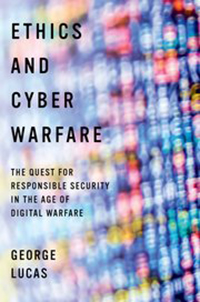
SSH is no laughing matter. It has become the military tactic of choice for an increasingly wide array of unprincipled nation-states, and they, in turn, are becoming ever more proficient masters of this novel warfare tactic. We need to take this threat seriously, and move quickly to avail the international community of the appropriate moral and legal norms with which to understand and restrain this new form of warfare. These, as I argue, have already been embodied in some of the previous and subsequent forms of attack: e.g., an increased willingness to distinguish between military and dual-use targets on one hand, and wholly civilian objects and institutions on the other, as well as to refrain from engaging in such cyber attacks without legitimate provocation.
These are fragile and tenuous achievements, however, which need to be acknowledged, ratified, endorsed, and strengthened by all parties to cyber conflict. That, to say the least, is a tall order within a domain of otherwise unrestricted conflict, within which warring adversaries claim their right to do whatever they please, to whomever they wish, whenever they want, with little fear of accountability or retaliation. Nevertheless it remains the case, as with conventional warfare, that the recognition and modest restraint of war is the first step toward a just and lasting peace.

Note
Policy experts in the U.S. Department of Defense include a variety of soft war tactics, including the various instances of SSH I discuss here, within a general category of conflict they term “grey war”: http://www.defenseone.com/ideas/2015/12/fighting-while-friending-grey-war-advantage-isis-russia-and-china/124787/. This is not a very precise or useful classification, in my view, because it lumps too many disparate tactics under a single umbrella, and thus also fails to distinguish among other important but distinctive types of “soft war.” The latter is the better general descriptor for all of these approaches to unarmed conflict, while SSH is a unique and important element that demands separate attention, for reasons I specify in this article.
References
Arquilla 1993. John Arquilla and David Ronfeldt.” Cyberwar is coming!” Comparative Strategy 12 (no. 2): 141–65.
Arquilla 2012. John Arquilla, “Cyber War is Already Upon Us,” Foreign Policy: (March-April): http://www.foreignpolicy.com/articles/2012/02/27/cyberwar_is_already_upon_us.
Clarke 2010. Richard A. Clarke and Robert K. Kanke, Cyber war: the next threat to national security and what to do about it. New York: HarperCollins.
Clausewitz 1830. On War. Translated and edited by Michael Howard and Peter Paret. Princeton: Princeton University Press, 1976.
Frowe 2015. Helen Frowe, The Ethics of War and Peace: An Introduction. Oxford: Routledge, 2nd edition.
Gross and Meisels 2017. Soft War: the Ethics of Unarmed Conflict, eds. Michael L. Gross and Tamir Meisels. Cambridge: Cambridge University Press.
Jenkins 2012. Ryan Jenkins, “Is Stuxnet Physical? Does it Matter?” Journal of Military Ethics 12 (1): 68-79.
Lucas 2017. George Lucas, Ethics and Cyber Warfare: the Quest for Responsible Security in an Age of Digital Warfare. New York: Oxford University Press.
Morkevičius 2017. Valerie Morkevičius, “Coercion, manipulation and harm: civilian immunity and soft war,” in Soft War: the Ethics of Unarmed Conflict, eds. Michael L. Gross and Tamir Meisels. Cambridge: Cambridge University Press: ch. 2.
Rid 2013. Thomas Rid, Cyber War will Not Take Place. Oxford: Oxford University Press.
Tallinn Manual 2013. The Tallinn Manual on the International Law Applicable to Cyber Operations. Ed. Michael N. Schmitt. New York: Cambridge University Press.
Tallinn 2.0 2017. The Tallinn Manual 2.0 on the International Law Applicable to Cyber Operations. Ed. Michael N. Schmitt. New York: Cambridge University Press.
Wolfendale 2017. Jessica Wolfendale, “Defining Soft War,” in Soft War: the Ethics of Unarmed Conflict, eds. Michael L. Gross and Tamir Meisels. Cambridge: Cambridge University Press: ch. 1.


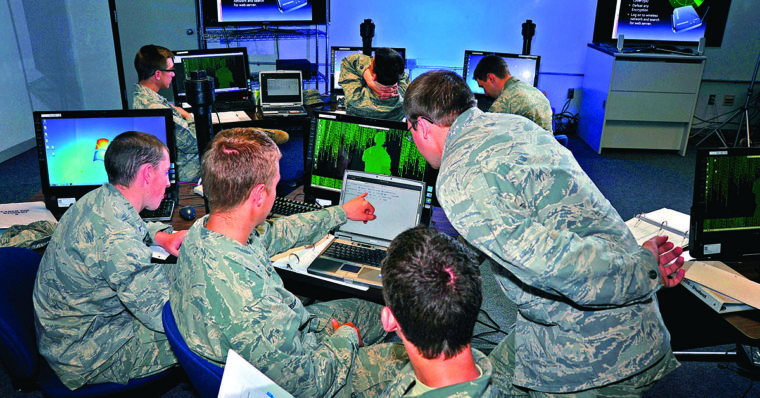
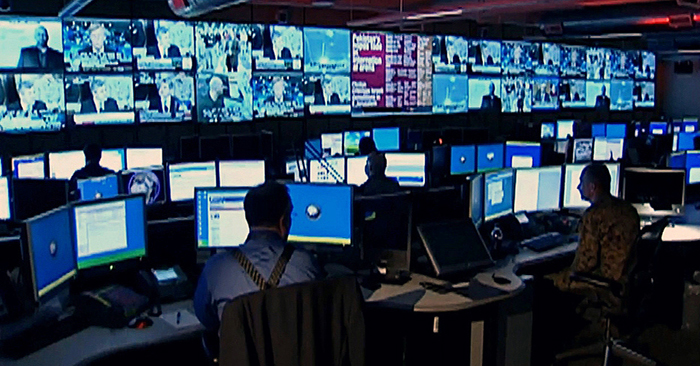
I don’t usually comment but I gotta say thanks for the pos on this special
one :D.